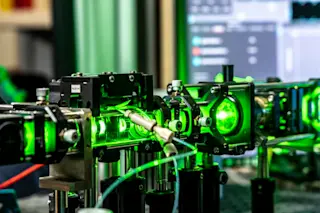On a scorching early afternoon in August 2007, Col. David “Diesel” Sullivan was doing his daily rounds at Creech Air Force Base outside Las Vegas when he got the call. A pilot under his command at the base, remotely flying an armed, unmanned MQ-9 Reaper aerial drone in eastern Afghanistan, had spotted four men perched on an Afghan hilltop. Were they Taliban? If so, they were perfectly placed to ambush an American raiding party just hours away.
Sullivan walked out of the heat and into the small, single-wide trailer operations room (the “ops cell”) to assess the situation firsthand. Maneuvering the Reaper by joystick, the pilot pointed to the screen: Four human shapes were silhouetted against a tarp some 7,500 miles away. The local time was 2 a.m. These were hardly goatherds, and with no coalition soldiers reported on the hill, consensus emerged that the four figures were insurgents. Sullivan ...














